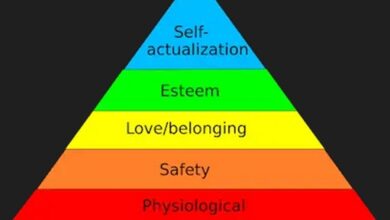What is Kinesthetic intelligence with Characteristics and examples
Kinesthetic intelligence is the ability to use the body to express feelings and ideas, and the ability to make or transform things with my hands. It’s the kind of intelligence that athletes and dancers alike have, as well as artists, mechanics, and surgeons. .
This concept is based on the theory of multiple intelligences. It was proposed in 1983 by the psychologist and Harvard University professor Howard Gardner. This author argues that the cognitive competence of man is best described with the term “intelligences”. This concept encompasses the set of mental skills, talents or abilities.
The body’s kinesthetic or kinesthetic intelligence belongs to one of the eight types of intelligence proposed by Gardner. It involves skills in controlling the body, as well as handling and manipulating objects. This also includes the ability to achieve goals related to physical actions, as well as training and refining responses to physical stimuli.
Sometimes, our body movements or postures tend to be automatic, escaping our awareness. By improving the body’s kinesthetic intelligence, the mind is more aware of the body’s movements. Therefore, they are controlled more safely and accurately.
In this way, we work for the mind to regulate our body and at the same time train the body to respond to what the mind demands.
The theory of multiple intelligences
In 1983, Gardner published his book “Frames of the Mind: The Theory of Multiple Intelligences” . This is the result of several investigations at Boston University’s Aphasia Research Center with people who have suffered from stroke and aphasia.
Children from Harvard ‘s Project Zero , a laboratory specializing in analyzing children’s cognitive development and associated educational implications, were also studied. The central question of their research was: is intelligence one thing or several independent intellectual activities?
Gardner defined intelligence as “the ability to solve problems or produce important products in a cultural context or in a given community”.
From this perspective, the human mind is best understood as a series of relatively independent faculties that maintain loose and unpredictable relationships with each other. , regardless of content and context.
Intelligence is therefore not a single capacity of the mind. Rather, it is a spectrum of different modalities, each with its own area of specialization. So intelligence is much more than a high IQ. This, in the absence of productivity, cannot be considered intelligence.
Broader definition of intelligence
Gardner said that intelligence could not be a single entity described psychometrically with an IQ score. We must define intelligence more broadly.
To do this, he established several criteria for defining intelligence. These criteria were drawn from biological sciences, logical analysis, developmental psychology, experimental psychology, and psychometrics.
This author states that all human beings know the world through 8 types of intelligence: linguistics, logical-mathematical analysis, spatial representation, musical thinking, use of the body or kinetic body, understanding of others or interpersonal, understanding of ourselves. same or intrapersonal and naturalistic.
Thus, subjects differ in the intensity of such intelligences. In addition to the way they use them to act, solve problems and get ahead.
Characteristics of Kinesthetic Intelligence (Examples)
We can distinguish kinesthetic intelligence by the following characteristics:
– Skills in controlling body movement (strength, flexibility, speed, coordination). For example, have the strength and coordination to build small furniture.
– Comfort and connection with your own body.
– Security and intuition in your movements. For example, be sure when handling a tool such as a hammer or wrench.
– Skills in manipulating objects. For example, use your hands to create things or make repairs.
– Ability to achieve goals related to physical actions.
– Ability to improve responses to physical stimuli. It is about changing responses depending on the captured physical stimuli.
Profile of people with kinesthetic intelligence
There are certain people who are more predisposed to kinesthetic intelligence. They are characterized by high dexterity and coordination, as well as increased strength, flexibility and speed.
People with this type of intelligence learn best by “doing” rather than listening, watching or reading. They prefer to discover for themselves how things work, manipulating them with their hands.
That is, they better capture concepts when they can manipulate objects physically. For example, these mathematical concepts based on objects represented three-dimensionally.
These individuals enjoy staying active and being outdoors. They like to perform sports activities and artistic expressions such as theater or dance. They stand out for their skills in manipulating objects, construction and manual work.
They usually choose professional profiles such as artists, dancers, athletes, physiotherapists, mechanics, artisans, surgeons, actors, etc.
How to develop kinesthetic intelligence?
It is possible to develop kinesthetic intelligence through very different ways and far from the traditional school environment.
People who have higher levels of this type of intelligence prefer to learn by acting, having more physical and bodily contact with areas of knowledge.
– Science: by performing experiments, fix broken toys or devices and have contact with different animals, substances and objects.
– Mathematics: Kinesthetic intelligence develops in this area, creating geometric objects such as pyramids, cubes, etc. It’s like working with everyday problems involving mathematics through games and using manipulative elements.
– History and geography: development of maps, models and reliefs about historical episodes or places.
– Language and communication: production of plays, debates, shows, stories and stories.
– Languages: through songs, interpretations and performances in different languages.
Recommendations for schools
It is very important that visits are made to shows, zoos, museums, historical places… So that the student can see, touch and feel things directly, involving his body.
To develop this intelligence, it is recommended that schools organize more excursions and outdoor getaways related to the subject being studied. Like games, theatrical performances, dances… He even learns to play musical instruments.
This active learning method developed through experience is being used as an educational method in alternative schools. For this, we work with small groups of children and the child is directly involved in the subject.
active subject
The student is not a passive subject who only hears or reads information, but experiences it through his body and feels it. It seems that this learning method is more beneficial than the traditional one, as it adapts to the individual characteristics of each child.
As a result, frustrations are avoided and each student’s motivation is increased as their pace of development is respected.
In this way, gross motor activities (wider movements with the whole body) and fine motor activities (precise movements, such as those made for drawing or writing) are integrated into everyday life.
How the child must move between different groups of children, collect their own materials, discuss their work with someone else, go out to find something they need for their project, etc. Thus, students improve the handling of their movements while learning.




